MusicRadar Verdict
These three pedals all shine with vintage class begging to inspire today’s players. If you want the timeless sounds in their fields, these might just be the last delay, reverb and modulation pedal you buy.
Pros
- +
Great looks and great sounds
- +
Impressive range of studio quality sounds
- +
Intuitive controls
Cons
- -
No MIDI connectivity at this premium price
- -
The Astra especially could use a second preset
MusicRadar's got your back
What are they?
BEST OF 2021: Despite its rich history in outboard studio gear (much of which is now immortalised in the digital domain), Universal Audio has come to the guitar effects hardware game after many successful software emulations.
The company’s first foray into effects pedals still seems significant, especially as its only overly guitar-based device before was the OX Box (the brainchild of James Santiago). But the signs were there a few years ago when UA enticed TC Electronic’s Tore Mogensen to join them as Senior Product Manager. The feature set on this trio of reverb, delay and modulation pedals makes it clear; the company means business. But how successful is the expansion from plugins to physical stompboxes here?
The prices may raise eyebrows, furthering the idea that UA is really the Apple of the musician market. But in return, each of these DSP pedals combines multiple types of the coveted vintage effects in their field and most of them are new for the company, modelling classic algorithms from studio and stompbox units; so for the Golden Reverberator it’s Spring, Plate and Hall with three variants in each. For the Starlight Echo Station, there’s Tape EP-III, Analog DMM and Precision digital delay. For these, the ABC type switch offers different options according to the delay type chosen that we’ll get to later.
Lastly, the Astra Modulation Machine with its SEGA-esque typeface offers even more of an all-in-one approach on paper. Chorus Brigade mode accesses Bucket-Brigade-style chorus and vibrato, Flanger / DBR mode combines a range of flanger sounds with some leftfield ‘sci-fi’ sonics. The Trem 65 mode brings sine and square modulation. There’s a lot to explore.
These pedals look great. Universal Audio’s design really is at the head of the game and these three do not disappoint. They look like plugin graphics turned brushed metal reality, an approach that separates them from anything else on the market. All three UAFX units look desirable with a well-struck equilibrium between retro and contemporary clean lines. Each keeps the control layout consistent and clear and… yes, they look good together. It’s almost as if UA want us to buy all three!

With the great first impressions we can get picky; the only thing we feel undermines the build quality are the black plastic jack inputs that jar a little with the high quality elsewhere, but it all feels firm and sturdy.
We’re also going to raise the point early that some players will lament the lack of MIDI connectivity here. UA’s response to this can be found on its site: “The goal was to keep UAFX simple and hands-on with a classic stompbox workflow for a more creative and immediate experience. We focused all our attention on making these sound as authentic and inspiring as possible.” We’re not quite convinced that adding MIDI would have impeded those aims and we’re sure some players who understandably want that connectivity in their rigs will use find it a turnoff at this price point. But the existing connectivity suggests future plans.
Want all the hottest music and gear news, reviews, deals, features and more, direct to your inbox? Sign up here.
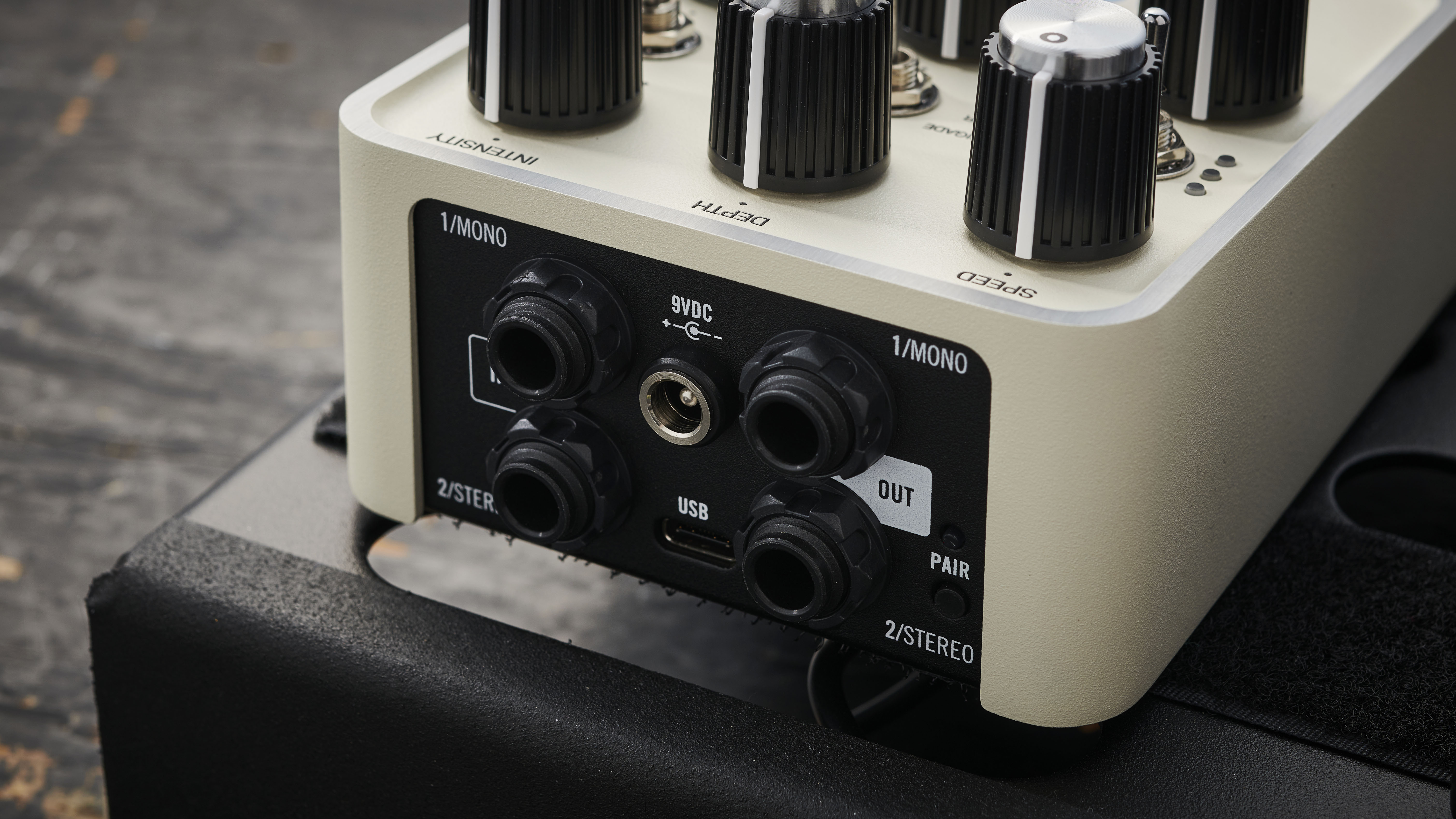
There’s onboard Bluetooth pairing on all three pedals for the UAFX mobile app still to come at the time of writing, and there’s a USB-C port too. However, the company does offer its UAFX Control app on PC and Mac, for now. Simply connecting via USB, players can register their pedals, install updates and switch between true or buffered/trails – the trails apply to the Golden Reverberator and Starlight Echo Station, allowing them to fade out instead of abruptly stopping when switched off.
Interestingly, you can also download free bonus effects via the app to add to the selections out of the boxes – for the Golden Reverberator you get a free bonus Chamber & Plate effect (vintage percussion/constant plates and acoustic chamber). With the Starlight Echo station, it’s a Cooper Time Cube and the Astra Modulation Machine has the option of a Dharma 61 (dynamically controllable harmonic tremolo) and Phaser X90 (classic vintage phasing) effects.
Golden Reverberator
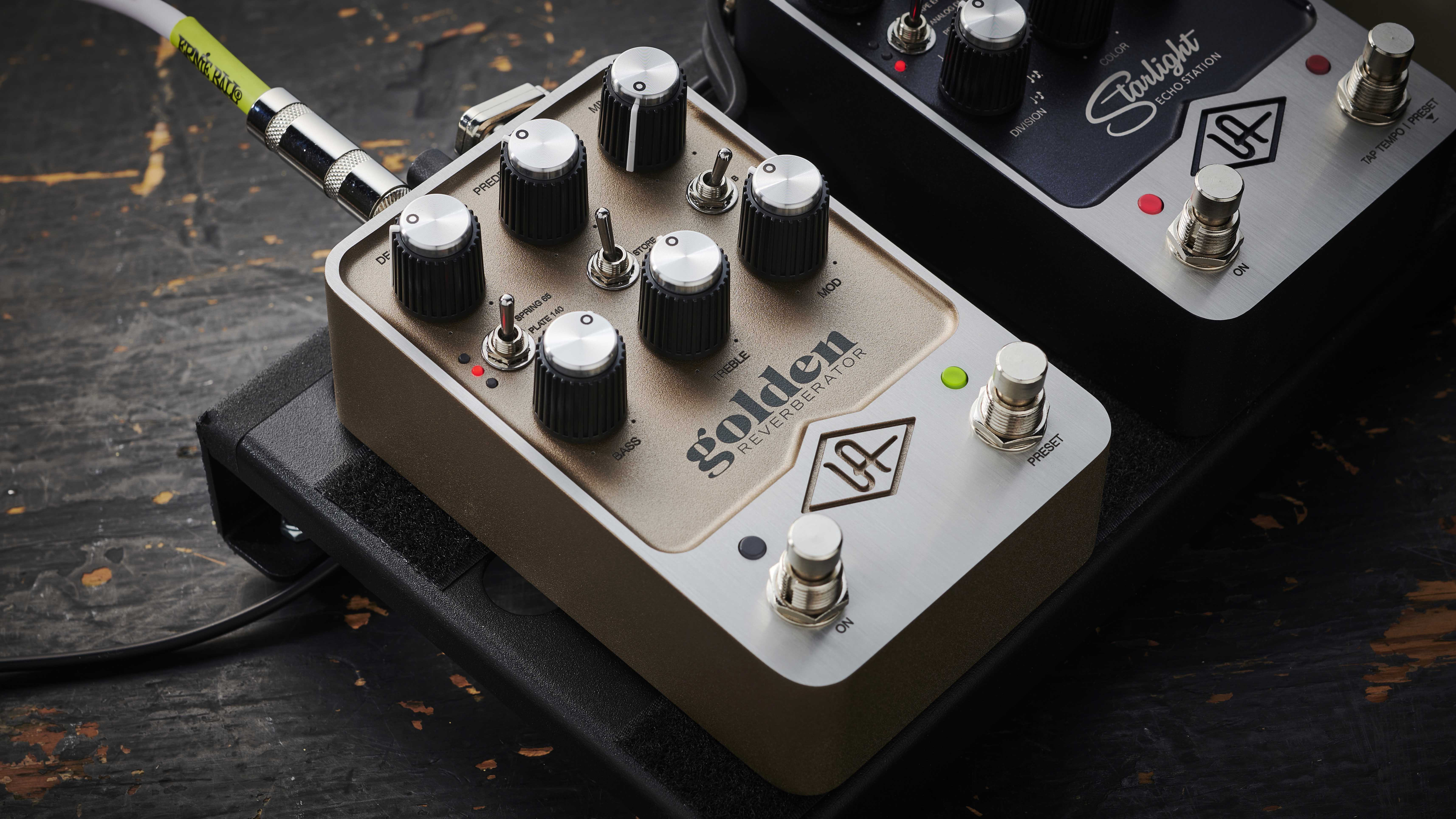
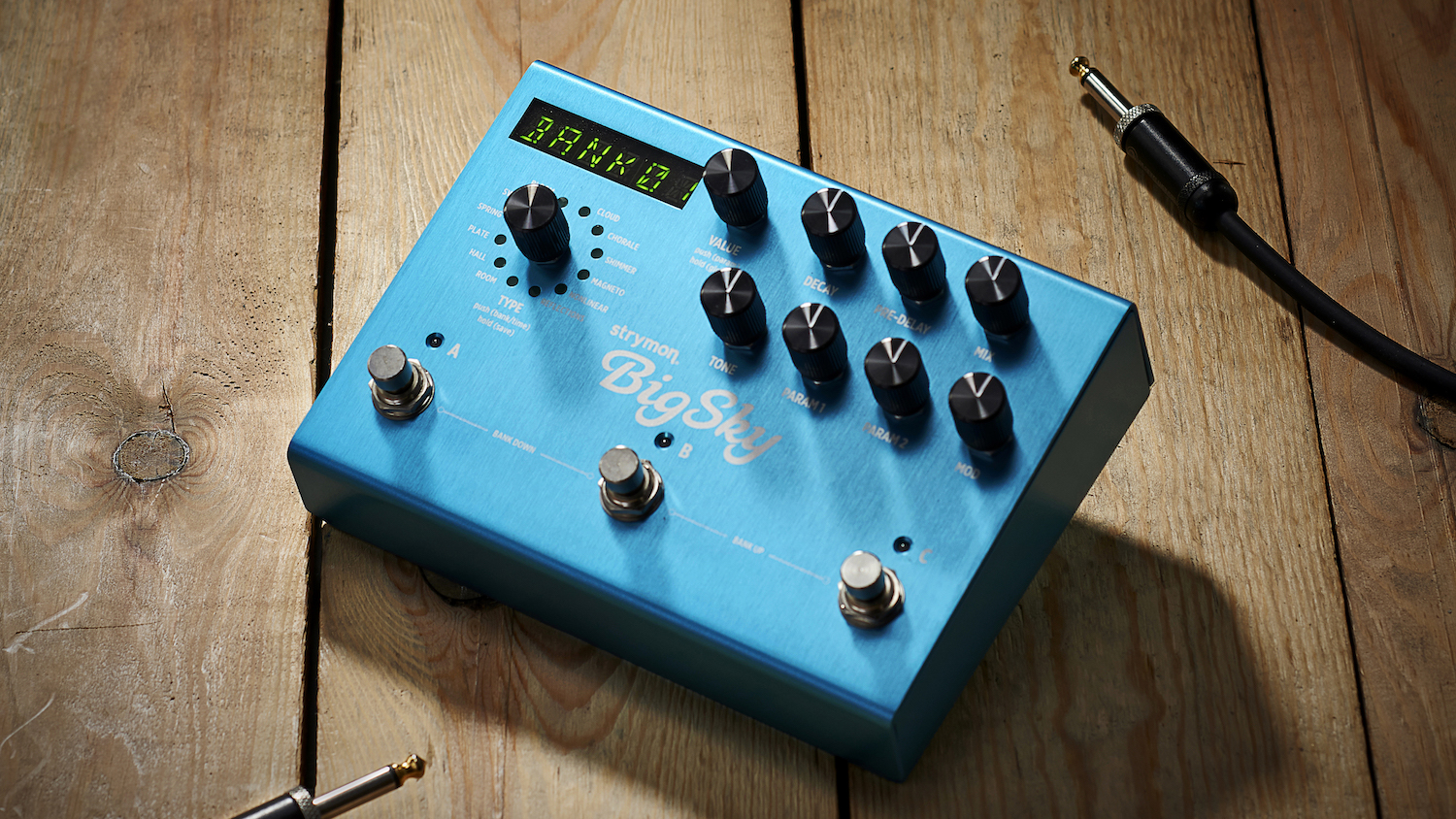
Our pick of the best reverb guitar pedals for every type of guitar player, whatever your budget
Vintage amp aficionados can salivate over the prospects of 12 reverb algorithms here; zoning their tone hound snouts in on Spring 65’s spring tank models from mid-'60s guitar amps. Here the Decay control moves from stock to shorter and longer lengths while the Mod knobs handle wow and flutter. Bass and Treble controls are welcome additions to voice your ‘verb in the mix.
The response to our playing dynamics is immediately satisfying and with time the incredible detail here is revealed. Smooth ambience or old school slap sound lush and glorious with our test guitars featuring a vintage-style Gibson P-90 and Fender Texas Special. Your pickup preference should help you gravitate to one of the three options here that are themed around Bright, Smooth and Ambient.
The latter offering a richer and darker character. Dialled to the left of midnight on the Mix’s dry and wet tipping point, all will be great everyday go-to reverbs, with the cinematic territory lying beyond. For spring reverb alone, the modelling here sounds incredibly authentic who have never spent quality time with the real thing. And here there’s far more control.

The Plate 140 sounds here are like the UAD EMT plug-in we’ve encountered, and that may well be enough to sell this pedal alone. Based on a trio of EMT plates from The Plant studio in Sausalito, California, here the Mod control varies the rate and depth. In theory, you could choose this as an always-on option with short tails, bringing modulation in on the right footswitch's stored preset. Keeping in mind that each of the three plate types here is affected by the modulation in subtly different ways.
We found the Bass and Treble controls especially useful when pushing the Plate 140 algorithms into ambient space – winding bass down and treble up to bring clarity amongst the post-rock drones we were creating.
Dial up the high and low decay and explore the modulation in conjunction with the Decay and Predelay with and it all gets beautifully atmospheric
But if that side of things sparks your inspiration (and honestly we could spend hours getting lost in these sounds), then you need to make haste for Hall 224’s Room, Small Hall and Large Hall digital reverbs. In addition, there are two additional 224 plate and chamber reverbs to download.
The Mod control here varies chorus and the Treble and Bass alter high and low-frequency decay. Used subtly, they’re great for adding space to leads and arpeggiated parts as you’d probably expect. Dial up the high and low decay and explore the modulation in conjunction with the Decay and Predelay with and it all gets beautifully atmospheric. The chorus adding some oscillating swirls that fade out into the endless black of space… it’s great fun!
With all these possibilities, the option for Spillover is worth mentioning. Applying to the Golden Reverberator and Starlight Echo Station, it means that you can choose to set the pedals so the effect isn’t cut off when switching. This is because the UAFX pedals use dual-engine processing with independent stereo effects running concurrently for the ‘Live’ mode and the preset mode. When you switch between the two there’s spillover for musical transitions.
Starlight Echo Station

All aboard the Starlight Express for Echo Station! Ok, let’s be serious – the delay pedal market is fierce with some bewilderingly advanced units being offered under £400, so can a newcomer make a splash? Channelling two of the greatest units of all time will certainly help.
Between them, the Echoplex EP-3 tape delay unit and Memory Man Deluxe analogue delay pedal have been utilised on classic tracks by players including David Gilmour, Duane Allman, The Edge, Eddie Van Halen, Robert Smith, Jimmy Page, Ed O’Brien, Brian May, Andy Summers… you get the gist.
Part of the appeal of both pedals were their preamps (Dunlop even made a pedal honing in on the EP-III’s) and it’s good to see UAFX allowing preamp colouration to be selected or turned off for your dry signal as you wish with the UAFX control app for Mac and Windows. Personally, the preamps are very much part of the appeal and boy, do they sound good here.
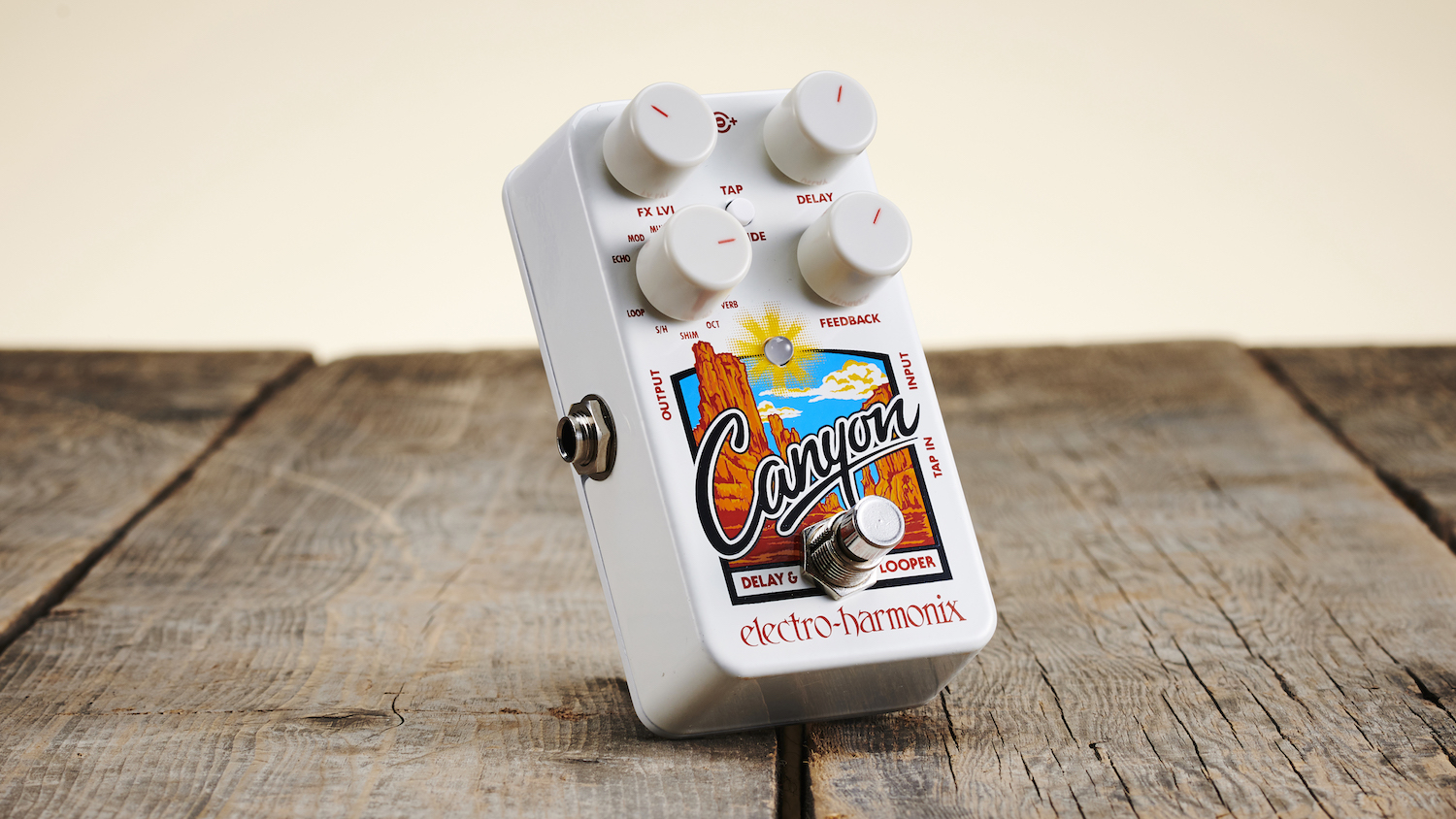
Our pick of the best delay guitar effects from Boss, Strymon, Electro-Harmonix and more
Warmth and grit abound in the decay – subject to how you dial up the Mix control. Then there’s that A/B/C switch for choosing between modes where you’ll find yourself spending quality time. For the Analog DMM you can choose chorus, modulation off or vibrato for the delay like the EH-X original. For the EP-III it’s a choice of different tape ages; Minty Clean, Used Warm and Dark Worn for the Machine model (rather than a tape age knob to turn), which gives you a comprehensive capture of the EP-III experience. It sure is minty too, but the other voices still pop with presence and fullness we appreciated. Though ‘dark’ would be a stretch, the high end tends to be reduced on repeats as you pass through.

This is where personal preference enters stage left and the character between units can win them loyalists
One of the huge attraction’s of tape delay is that it couldn’t produce pristine repeats, the vintage units limitations instead added character and quirks that became desirable, especially in retrospect. The Mod control’s Wow & Flutter of the Starlight feels fuller and a tad cleaner across the EQ spectrum to us in general than some other premium EP-III recreations we’ve encountered (ok let’s just call it; the Strymon El Capistan) that can be pushed to in warmer and more distorted detail – more of a worn detail? Obviously, this is where personal preference enters stage left and the character between units can win them loyalists. Regardless, there’s still a tasty curry of splicey goodness and character to feast on. And yes, you can nail Gilmour’s Floyd Run Like Hell vibe.

The Analog DMM brings out the Bucket Brigade modelling; you want lush modulated repeats? You got ‘em. This is up there with the very best of the vintage Deluxe Memory Man-inspired stompboxes. Again, to our ears this has a little more high frequency on tap that we reckon will really come good in a band mix.
You can drive it with the Color control that adds input gain here, and we were quite partial to the chorus modulation’s chime under duress for post-punk riffs.
If Pristine is based on a specific classic digital delay pedal, UA isn’t saying. But it’s a very accurate description for the kind of repeats you’ll get here – with the option to add flanger or chorus modulation. The former is great for solo break dynamic, using a short delay to add width. Again, if required you can keep that in your metaphorical back pocket as a preset and use a completely different type of delay as what UA calls your ‘Live’ option. It may well encourage you to incorporate delay in different ways.
Astra Modulation Machine
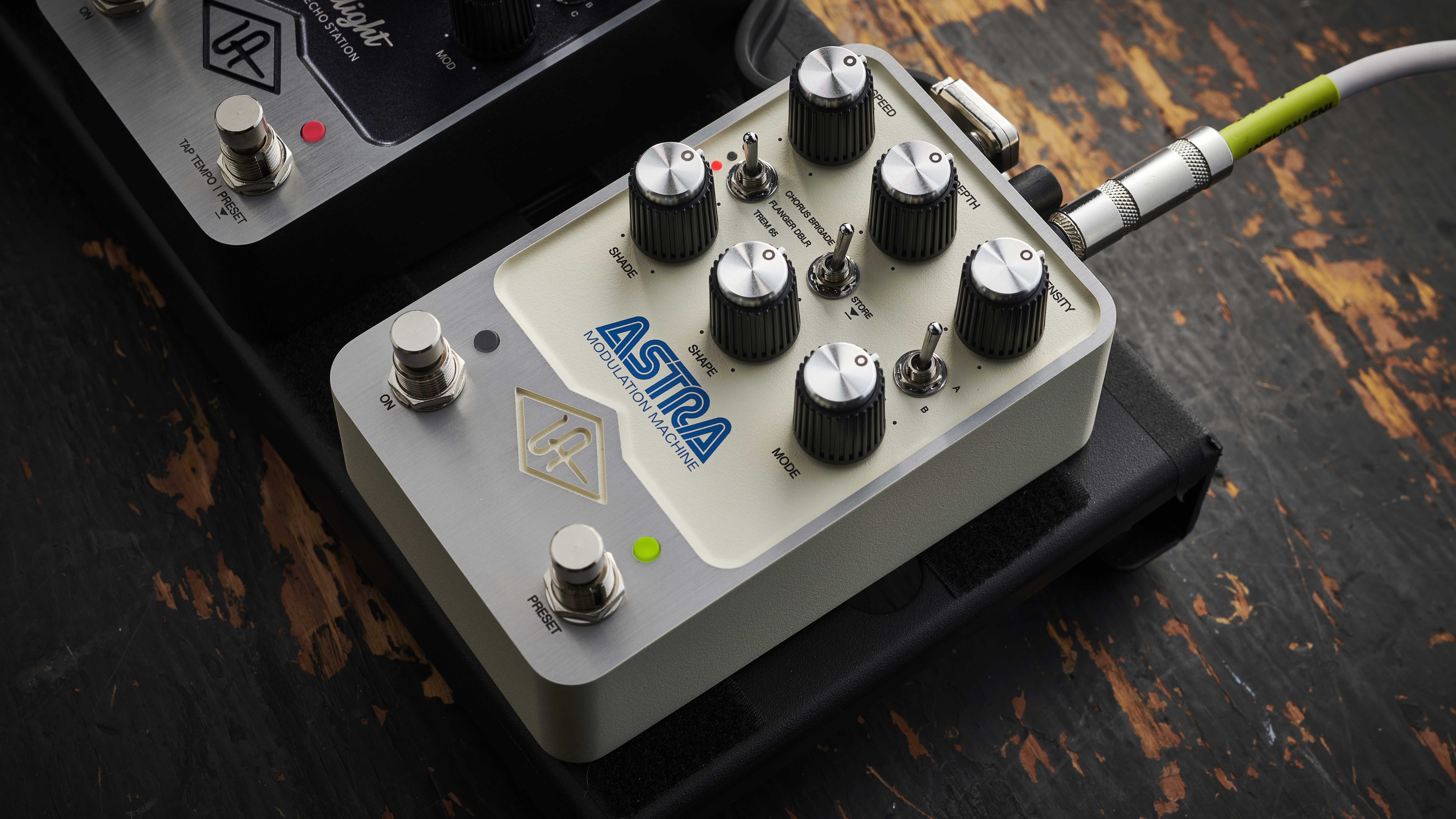
Are modulation pedals as sexy as reverb and delay? Prepare to be dazzled by one that crams in more types of effects than either of the other UAFX offerings. Bucket Brigade chorus (inspired by the celebrated Boss Chorus Ensemble), flanger/doubler (a recreation of MXR’s ‘80s rack unit), vibrato, tube tremolo. Plus a bonus phase X90 based on the classic MXR Phase 90 alongside a Fender Brownface-inspired Dharma Trem ‘61 harmonic tremolo, which you can download via UA’s app. Quantity, yes. But quality too?
Absolutely. We could play coy but let’s just be clear early on; there are fantastic sounds to be found here that recall classic ‘70s and ‘80s tones from the likes of Rush, Heart, The Police and Van Halen. It’s a wonderful showcase of modulation effects from designers who have clearly done the groundwork.
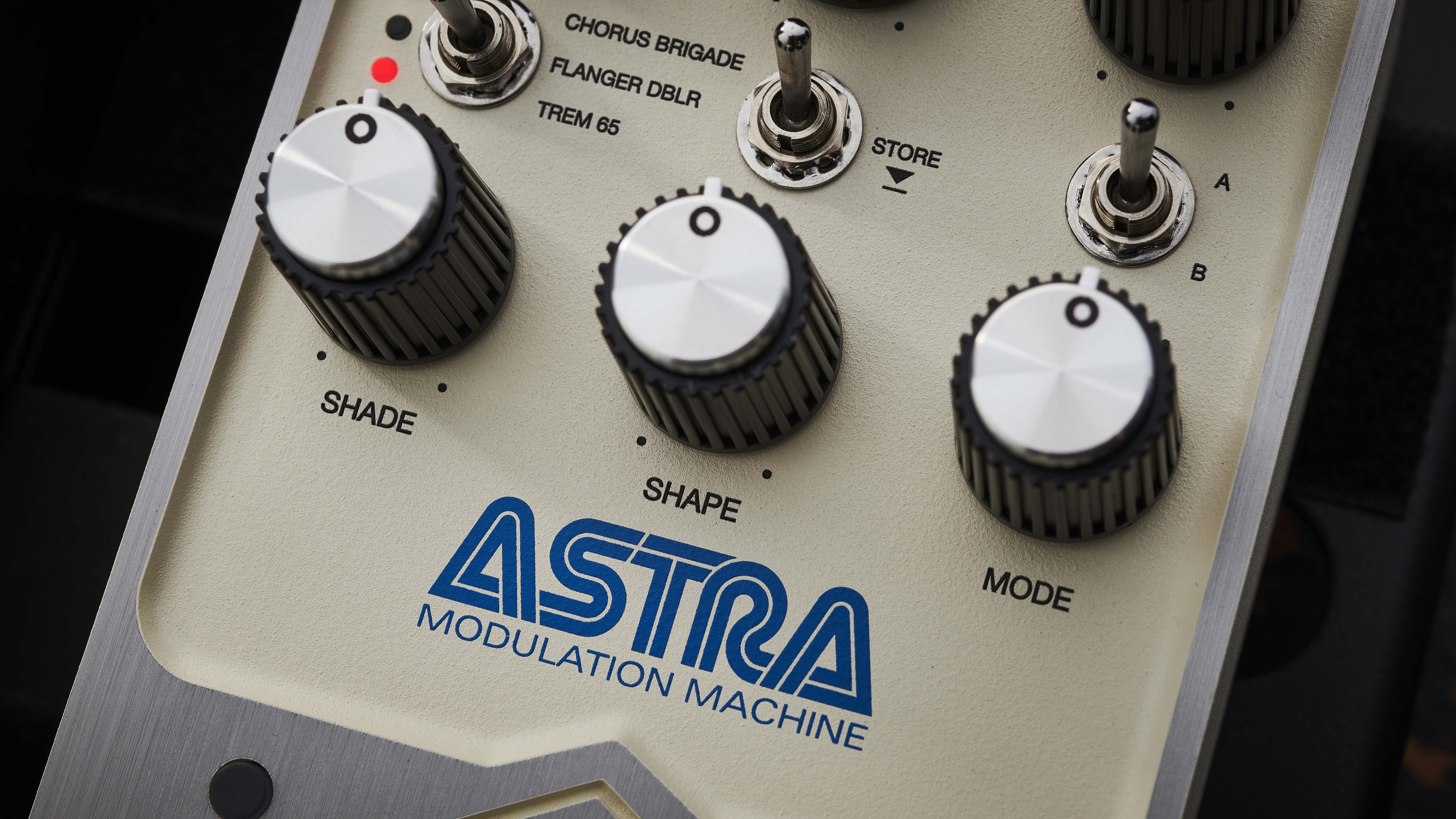
With so much in the box, you need to do a little more prep on the controls and how to access the features here. For example, the Intensity control performs four different functions and Shade performs five. What’s consistent is the incredibly detailed modelling here – lush stereo oscillation and shimmery chimes, grittier modulation and sweeping atmospheric character. It all sounds so musically detailed, collating the sounds of classic units in one box.

If you’re looking for wild leftfield sonics, this isn’t Astra’s M.O but connoisseurs of classic, tasteful modulation pedals will have a field day
The dual stereo strengths here are a result of the Astra running dual processing; effectively modelling two pedals running simultaneously for Chorus Brigade, tremolos and Phaser X90.
If you’re looking for wild leftfield sonics, this isn’t Astra’s M.O but connoisseurs of classic, tasteful modulation pedals will have a field day. There’s a case the Astra justifies an extra preset switch or at least storage for the price and area of effects it deals in. It would certainly widen its stage usability.
However, for quality of sounds, this is benchmark modelling in a pedal. Even better than the real thing? Well, it’ll certainly save some space on your pedalboard.
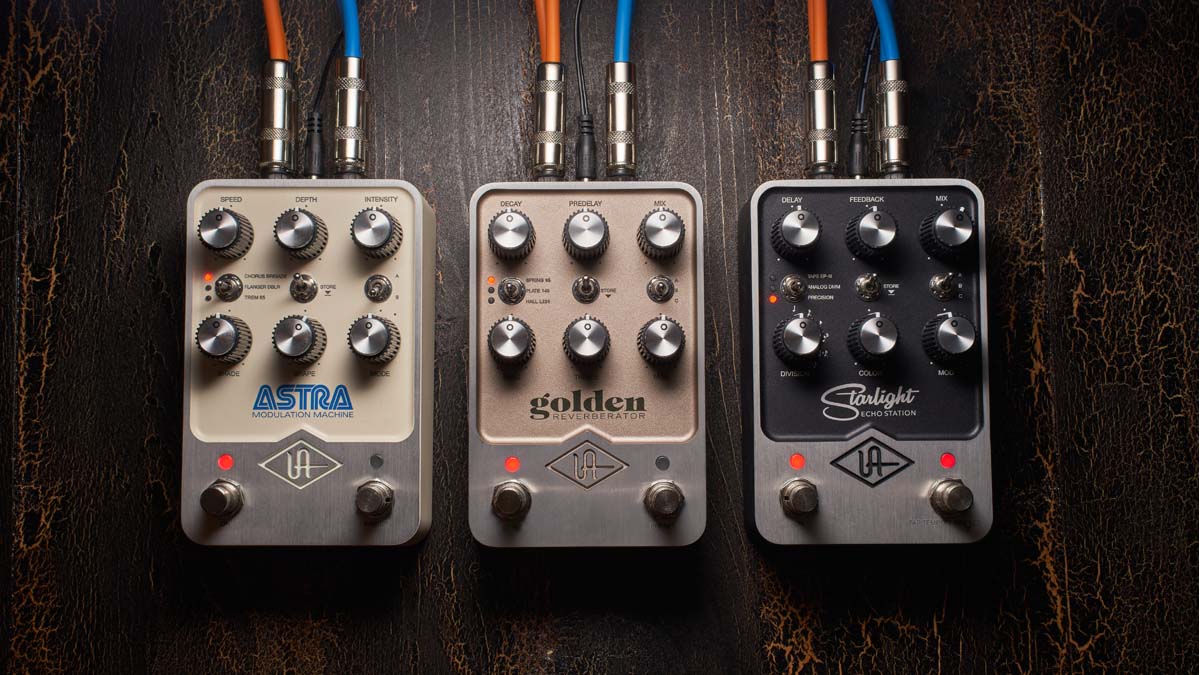
Verdict
The proposition here is clear. Entering a pedal market that is crowded and brimming over with innovation and quality, Universal Audio has used its expertise in sound and aesthetic design to offer three pedals recreating the sounds of units that are proven classics. Mission accomplished – these pedals sound spectacular and each feels like a comprehensive package in their respective field.
The lack of MIDI or even real-time USB control will frustrate some but it comes back to the UA statement here; classic sounds delivered with advanced modelling tech for a hands-on experience. We appreciate that but it seems odd to cut out some players with pedals that do and offer so much. With that in mind, an extra preset to store on each pedal would also have been welcome. Especially as UA make the saving process so easy here.
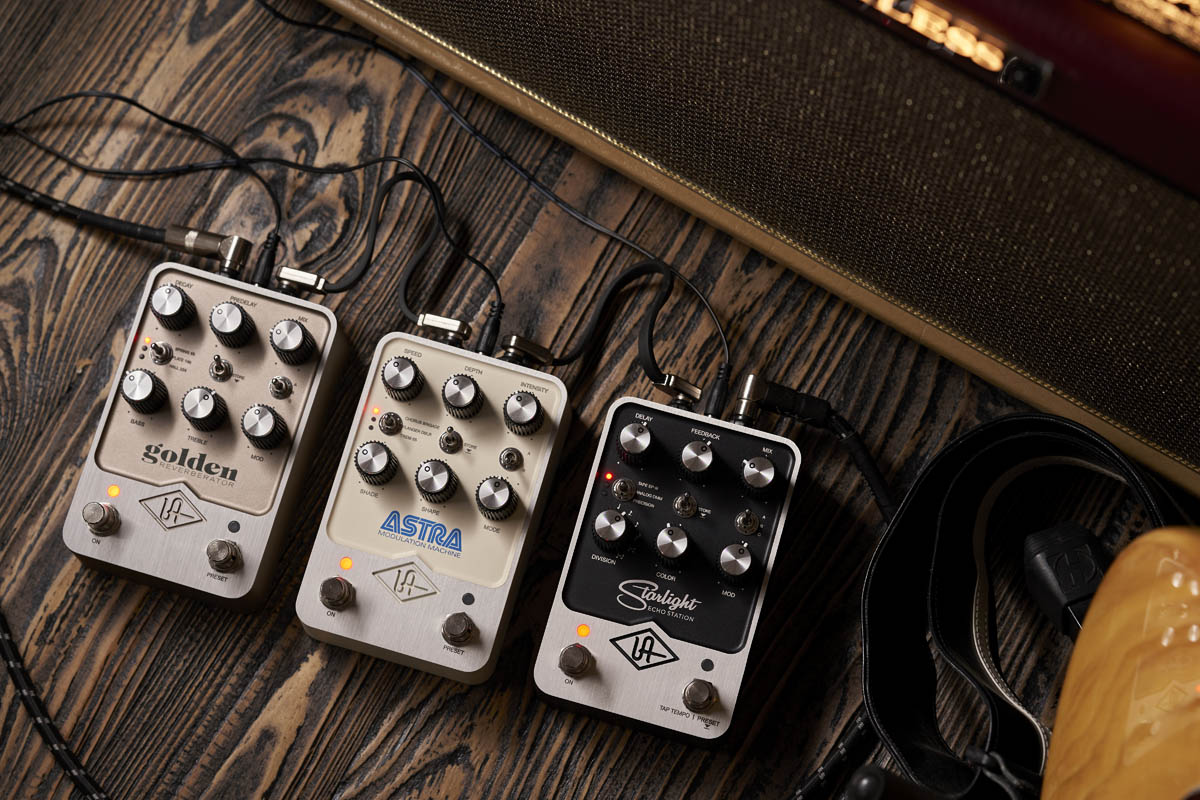
If they seem expensive, and they are in the higher bracket, time with them argues they offer a lot in return. Inevitably they feature some tough competition, especially in the reverb and delay pedal markets – and that’s great news for players looking to make informed choices. And these deserve to be on your list – once you try this level of quality, it's difficult to unhear it.
MusicRadar verdict: These three pedals all shine with vintage class begging to inspire today’s players. If you want the timeless sounds in their fields, these might just be the last delay, reverb and modulation pedal you buy.
What the web says
"So how do these three pedals compare with the competition in terms of pure tone? Honestly, at this end of the market a fair chunk of that comes down to personal taste, but we will say that nothing else we’ve tried is categorically better… and we doubt many players would be happy to swap for anything cheaper after a day of getting to know them."
Guitar
Hands-on demos
Andy Martin, Reverb
Pete Thorn
Thomann
Andertons
Specifications
Universal Audio Golden Reverberator
• CONTROLS: Decay, Pre-delay, Bass, Treble, Modulation, Mix; toggle switches for effect type, preset store and sound A/B/C; manual/bypass and preset/bypass footswitches
• FEATURES: Mono/stereo inputs and outputs, USB-C for app control and updates, Bluetooth for app control; switchable true or buffered bypass (via app)
• POWER SUPPLY: 9-volt mains supply only (minimum 400mA) (not included)
• DIMENSIONS: 141 x 92 x 65mm
Astra Modulation Machine
- CONTROLS: Speed, Depth, Intensity, Shape, Shade; toggle switches for effect type, preset store and sound A/B selection, rotary mode switch; manual/bypass and preset/bypass footswitches
- FEATURES Mono/stereo inputs and outputs, USB-C for app control and updates, Bluetooth for app control; switchable true or buffered bypass (via app)
- POWER SUPPLY: 9-volt mains supply only (minimum 400mA) (not included)
- DIMENSIONS 141 x 92 x 65mm
Starlight Echo Station
• CONTROLS: Delay time, feedback, mix, Division rotary control, Color, Modulation, toggle switches for effect type, preset storage and selection of sounds A/B/C; manual/bypass and preset/bypass footswitches
• FEATURES: Mono/stereo inputs and outputs, USB-C for app control and updates, Bluetooth for app control; switchable true or buffered bypass (via app)
• POWER SUPPLY: 9-volt mains supply only (minimum 400mA) (not included)
• DIMENSIONS: 141 x 92 x 65mm

Rob is the Reviews Editor for GuitarWorld.com and MusicRadar guitars, so spends most of his waking hours (and beyond) thinking about and trying the latest gear while making sure our reviews team is giving you thorough and honest tests of it. He's worked for guitar mags and sites as a writer and editor for nearly 20 years but still winces at the thought of restringing anything with a Floyd Rose.
